INSIDE OUT:
THE CASE FOR COMMUNITY VOICE
INTRODUCTION
Why Community Voice?
Community Voice is defined as a representation of diverse voices that must be heard, understood and validated. It is a two-way directional approach geared towards listening to individuals and institutions alike while building trust as an asset, embracing transparent communication and moving change-worthy initiatives forward together.

Trust is at an all-time low.
Confidence in America’s ‘trusted’ institutions is at an all-time low – and according to Gallup’s annual survey, these numbers are only dropping. This includes community trust in businesses, government, faith communities, media and the medical, justice and education systems.

This drop in trust is due to a range of issues, but Next Stage believes that this is largely because of broken systems and a top-down approach to the challenges of local communities. Nonprofits are similarly facing more challenges as they build trust and expand programming to meet community needs. We believe this is due to the long-standing approach of giving priority to leaders who’ve upheld this top-down approach of governance, ideation and implementation – but where does that leave the neighbors, nonprofits and institutions most proximate to the day-to-day challenges of a community?

Community Voice is an approach that relies on the co-design of solutions in community and ensuring that all voices are represented. And while the concept isn’t new, our traditional approaches aren’t working. Picture the way organizations often ‘do’ Community Voice – a cycle of knocking on doors, conducting survey after survey, and convening one-time focus groups that don’t report back on findings. These activities have their place – but it is not the most effective way to garner trust, especially when there is no community champion or advocate to help form or solidify trust.
With institutional trust at an all-time low, it is critical for nonprofits to identify and cultivate trust in those hyper-local organizations and leadership. We envision grassroots and grasstops leaders sharing resources and wisdom to build solutions that make our communities stronger and more prosperous. Community Voice is an activity that all organizations need to do – and we have found that most want to meaningfully engage. The question for many nonprofits and private sector organizations is “how?”
This Report explores the concept of Community Voice, how we got here and where we’re going, along with some practical tips for your own community engagement.
How We Got Here: Systems in Crisis |
01 |
